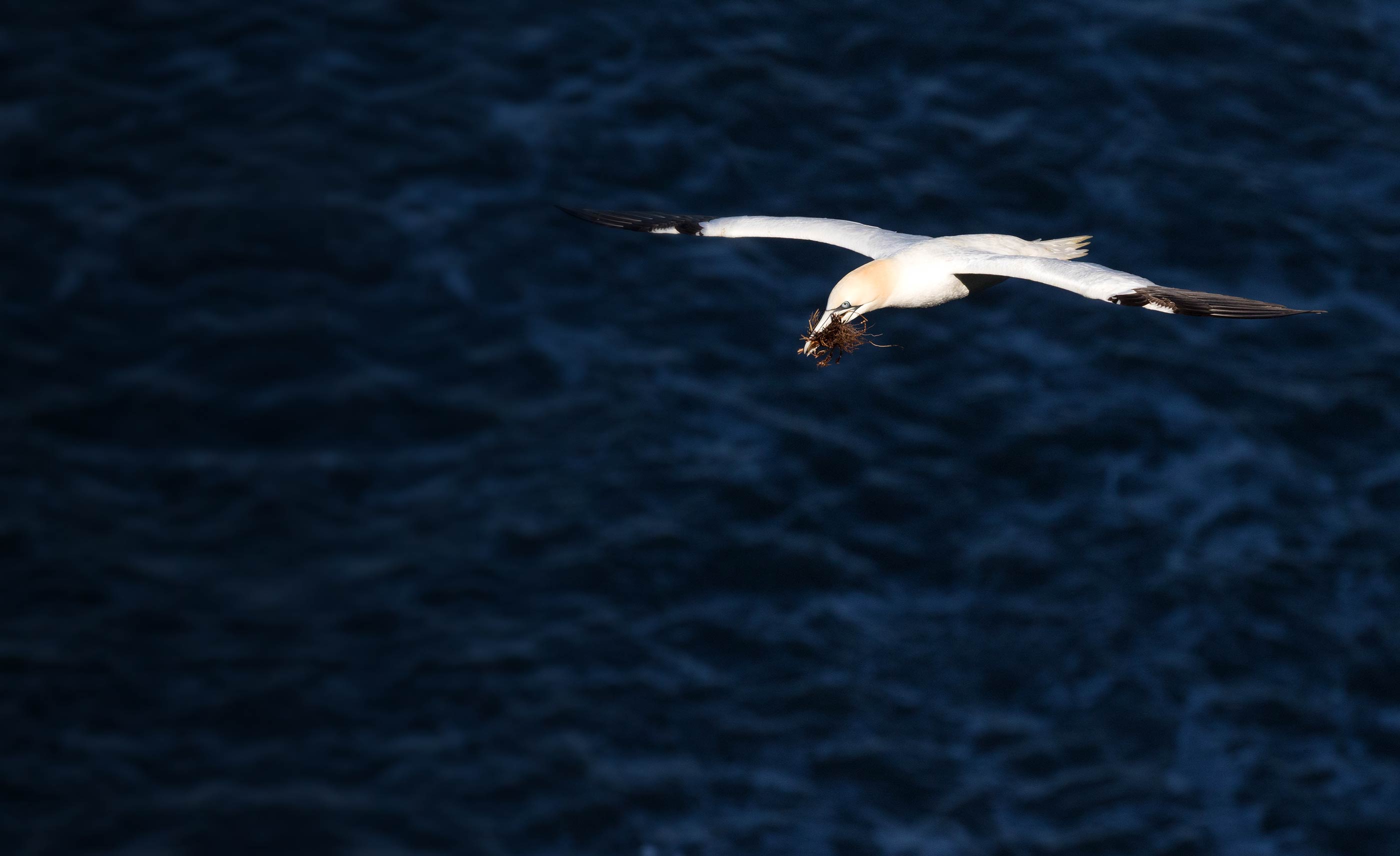2013
December: Did you know...
...that at 450g, the Arctic Skua weighs about the same as an average sized Christmas pudding which is equivalent to nine roast potatoes or 45 Brussel Sprouts. On average, the heaviest flying bird is the Dalmatian Pelican, at between 11-15kg, at least the same amount as 23 Christmas puddings!
November
Did you know that berries use the colour red to signal that they are ripe, so that thrushes and other birds will eat them and hence help to disperse the seeds. Ornamental varieties of species such as holly, with yellow, orange and pink berries, stay on the trees and bushes much longer, as birds assume that the sugars have not yet fully developed within the fruit.
October
Do you know what weighs almost 3kg and has walked the equivalent of twenty times around the equator? It's Bird Atlas 2007-11 of course! Over 40,000 observers contributed to the Atlas and covered 50,000 tetrads - that would have kept a single observer occupied full-time for 100 years! Right now the pages are coming off the presses ready to be compiled into the most comprehensive overview of bird distribution and change in Britain and Ireland!
September
Did you know as far back as 1702, it was suspected that a migrant bird was driven by a hidden force when deciding on the right time to leave on the first step of their migration.
It has since been proven that this is indeed the case. Endogenous factors play an essential role in the initiation of first departure in a long distance migrant. It's been discovered that birds such as Willow Warbler, a typical migrant species, are equipped with internal ‘circannual rhythms’ that control migratory restlessness (Zugunruhe), and the time to set off.
A hormonal change is thought to be a driver of these rhythms. Couple this with external stimuli such as day length and they combine to produce an internal clock that over subsequent years can prove to be surprisingly accurate.
Chris, one of our satellite tagged Cuckoos shows this well. His departure dates from the UK over the last three years have been, 17 June (2011), 12 June (2012) and 20 June (2013). Whilst his arrival dates in Chad, after his crossing of the Sahara, have been 25 July (2011), 20 July (2012) and 25 July (2013). The two dates we have for Chris’s arrival back in the UK are, 1 May (2012) and 4 May (2013)., all down to the power of a few hormones, 'circannual rhythms' and the length of a day.
August
Did you know that Spotted Flycatchers moult backwards? Late summer is the moulting season for most birds; they use the time between breeding and migration (or fattening up for the winter) to undertake the energetically-challenging process of changing all or most of their feathers. Some migrants, such as Garden Warbler, Reed Warbler and Spotted Flycatcher, will wait until they have completed their flights to Africa, while Blackcaps, Willow Warblers and Pied Flycatchers, for instance, moult here. Almost all species start moulting their main flight feathers (primaries) from the inside, working out towards the tips of the wing. The Spotted Flycatcher, on the other hand, starts at the tip and works inwards. There is a suggestion that this aberrant moult pattern may have resulted from a genetic mutation, as outlined in this fifty-year old paper by BTO scientist, Ken Williamson, in British Birds.
July
Did you know that recently fledged birds have 'bare armpits'? One of the features used by bird ringers to assess the age of young birds is the amount of feathering under the wing. In their race to get out of the nest as quickly as possible, and hence reduce vulnerability to predation, chicks grow fewer feathers than they will as adults, adding the extra insulation a few weeks later. Ageing techniques include looking for narrower and more pointed tail and wing feathers as well as a quick check for 'bare armpits'.
June
Did you know apparent mixed singing is not as unusual as you might think! It is most often encountered in closely related species and typically involves pure bred individuals, as opposed to hybrids, that have mis-learnt their song. You are most likely to hear mixed song containing elements of Willow Warbler and Chiffchaff, which in the majority of documented cases involves Willow Warblers. Read more about this and view sonograms here and listen to examples on the Birding Frontiers Blog.
May
April
March
February
Did you know that Long-tailed Tits can benefit from the presence of Sparrowhawks? With up to 2600 downy feathers to find, with which to construct their nest, a pair of Long-tailed Tits will home in on a recent kill, choosing downy body feathers and carrying them to their nest site. Add loads of spiders' webs and flakes of lichen and that's this year's snug, spherical home completed - but it may take up to three weeks.
January
Did you know that the Andean Hillstar, a species of hummingbird that lives in the high Andes, is one of few birds to go into a sort of mini-hibernation or torpor. Daytime temperatures are often around a pleasant 20°C, perfect for a mountain living hummingbird but at night, the temperature drops below freezing so, to survive these conditions, the hillstar roosts in a crevice and goes into torpor. The roosting site is carefully chosen and faces into the rising sun, to make best use of the early morning rays. Once the body temperature is back to normal the hummingbird goes about the daily business of finding nectar.
See previous 'Did you know' facts from 2012.











Share this page